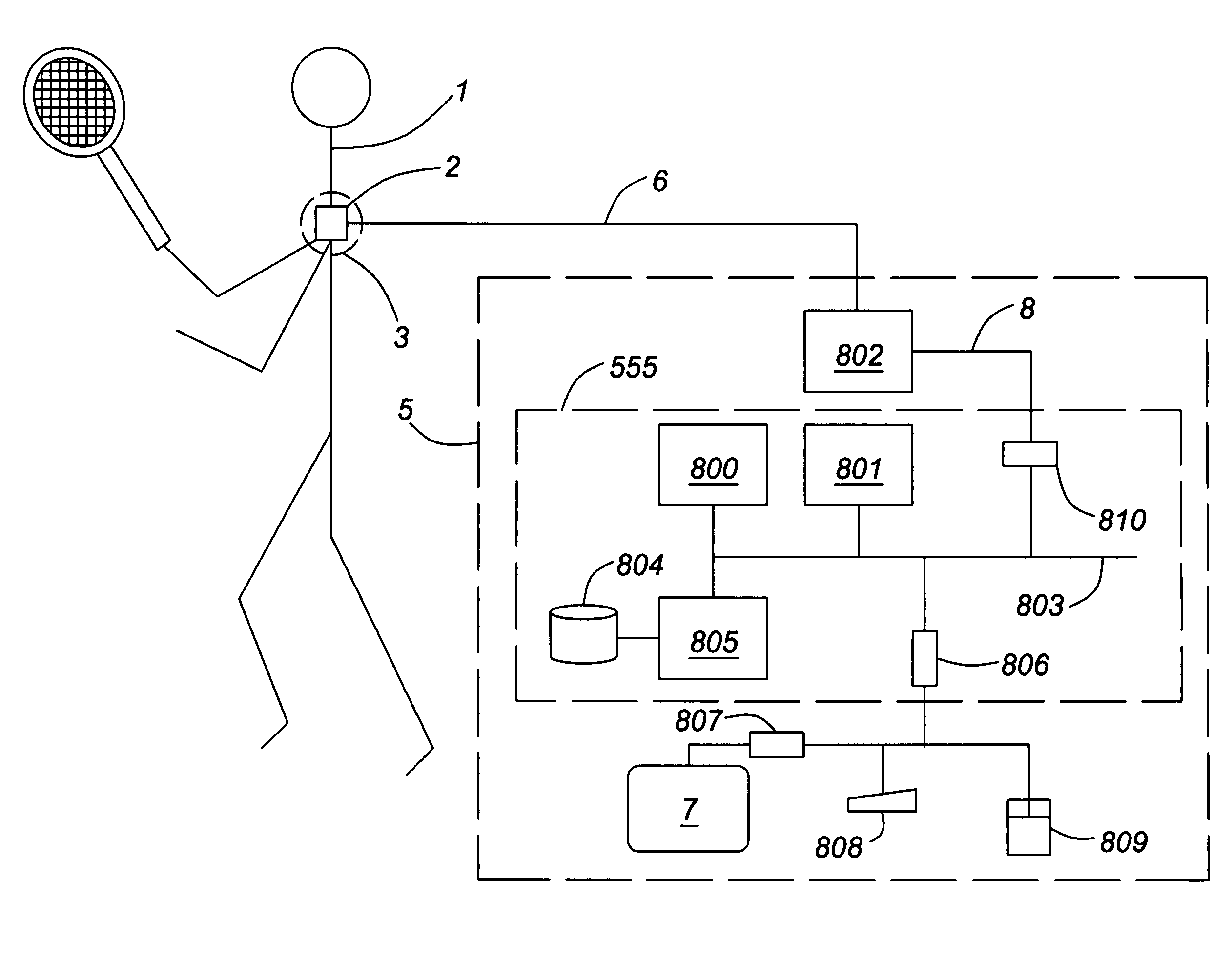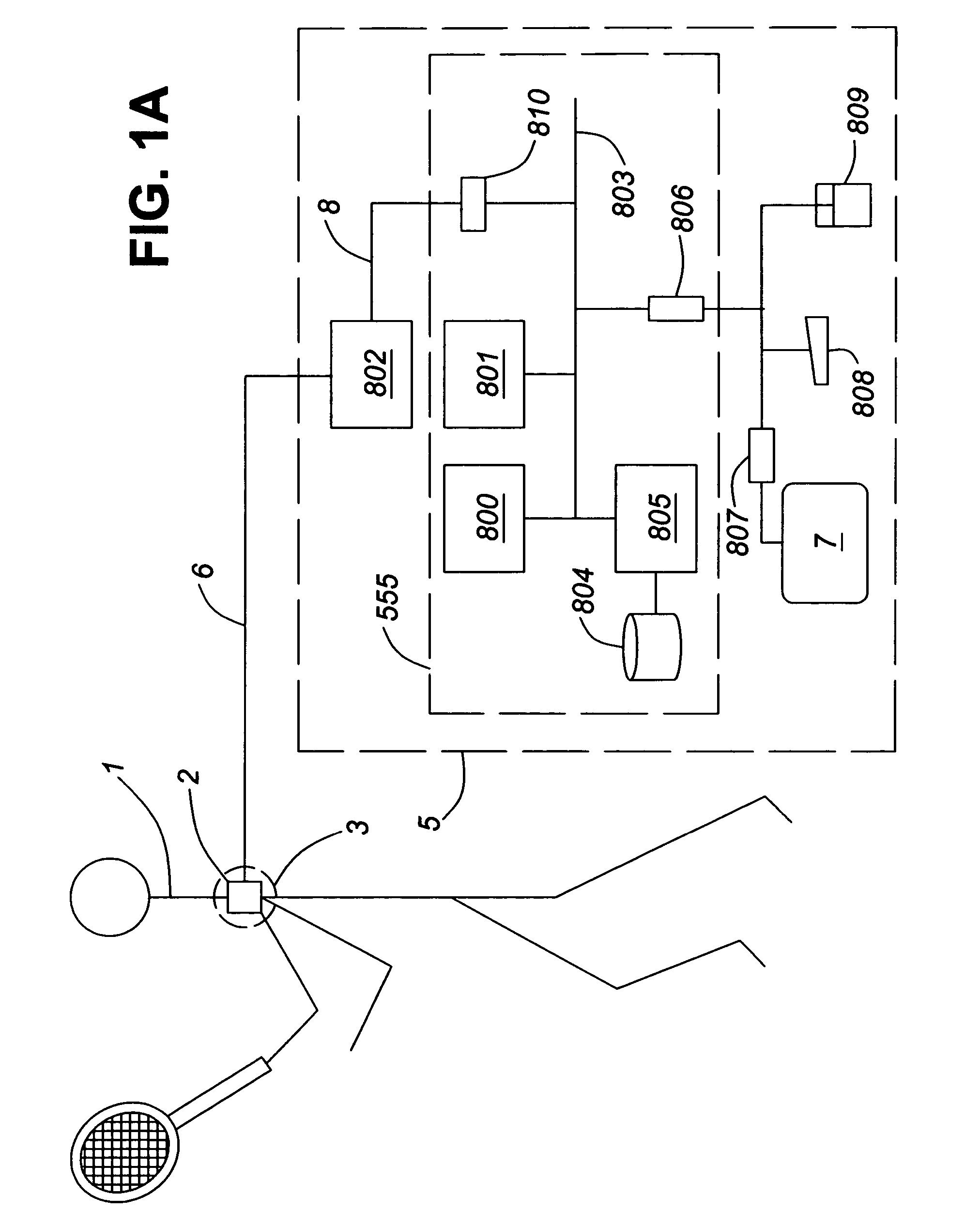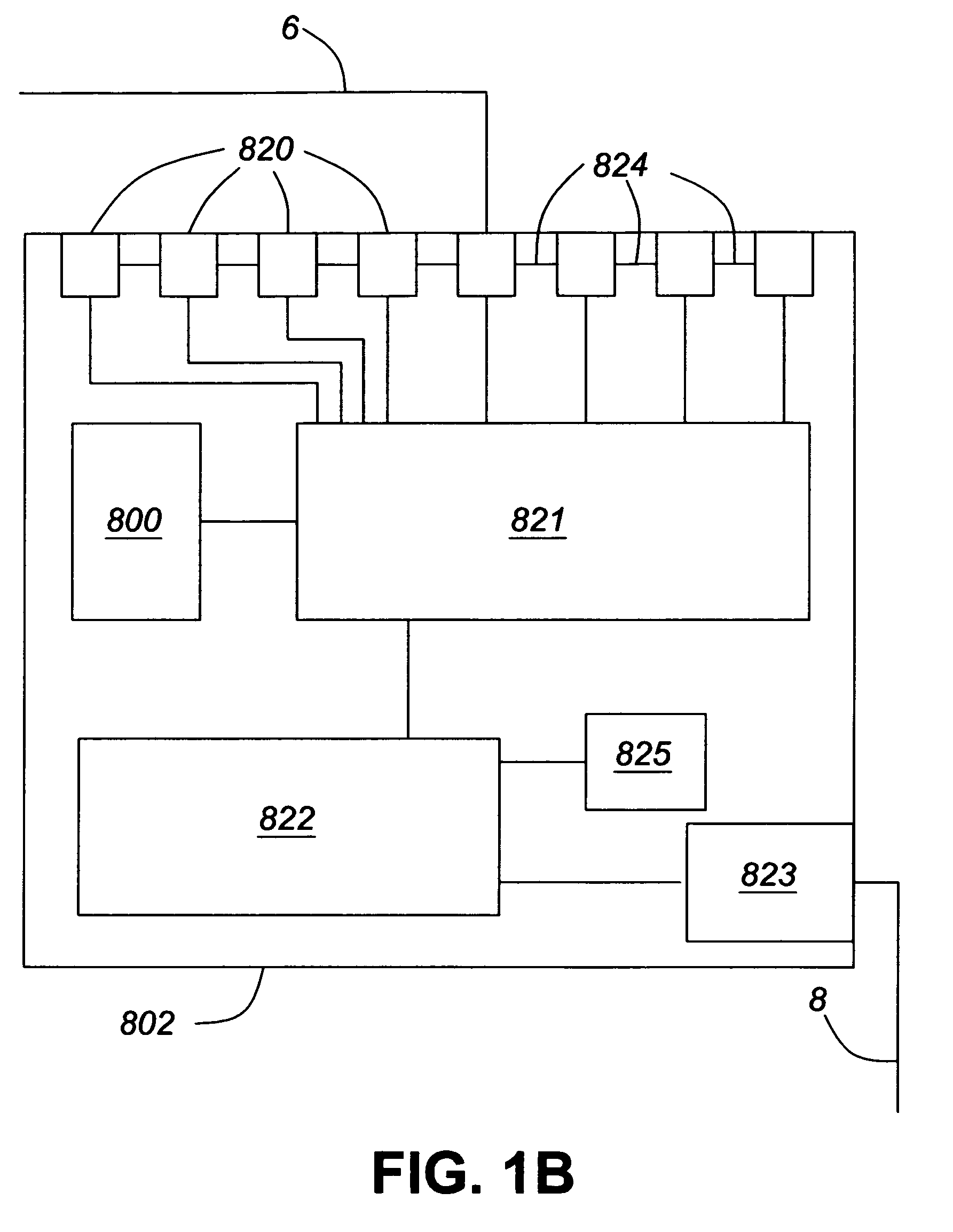Kinesthetic training system with composite feedback
a training system and composite feedback technology, applied in gymnastics, instruments, force/torque/work measurement apparatus, etc., can solve the problems of not teaching that the signal strengths of the respective sensors are mixed, falls short of producing a “composite” output, and does not address the treatment of multiple outputs to produce a single display, etc., to achieve the effect of more responsive to effor
- Summary
- Abstract
- Description
- Claims
- Application Information
AI Technical Summary
Benefits of technology
Problems solved by technology
Method used
Image
Examples
Embodiment Construction
[0098]FIG. 1A depicts a subject 1 training for performing a desired movement related to, for example, the game of tennis. The subject 1 is provided with an electromyographic (EMG) sensor 2, disposed on the subject's shoulder area 3. This sensor 2 provides an electrical signal generated by the contraction of muscles, an electromyographic signal arising in the shoulder area 3 of subject 1. The EMG sensor 2 can be provided with a preamplifier (not shown) for pre-amplifying the EMG sensor signal in order to provide an electrical signal sufficiently strong to be fed to a signal processing means 5 via communication line 6.
[0099]As shown in FIG. 1A, the signal processing means 5 may include a personal computer system (PC) 555 having a central processing unit (CPU)-805 coupled via bus 803 to memory 801, interface port 810, disk controller 805 and input / output controller 806. The disk controller 805 is coupled to storage device 804 and the interface port 810 is coupled to interface 802 via c...
PUM
 Login to View More
Login to View More Abstract
Description
Claims
Application Information
 Login to View More
Login to View More - R&D
- Intellectual Property
- Life Sciences
- Materials
- Tech Scout
- Unparalleled Data Quality
- Higher Quality Content
- 60% Fewer Hallucinations
Browse by: Latest US Patents, China's latest patents, Technical Efficacy Thesaurus, Application Domain, Technology Topic, Popular Technical Reports.
© 2025 PatSnap. All rights reserved.Legal|Privacy policy|Modern Slavery Act Transparency Statement|Sitemap|About US| Contact US: help@patsnap.com



